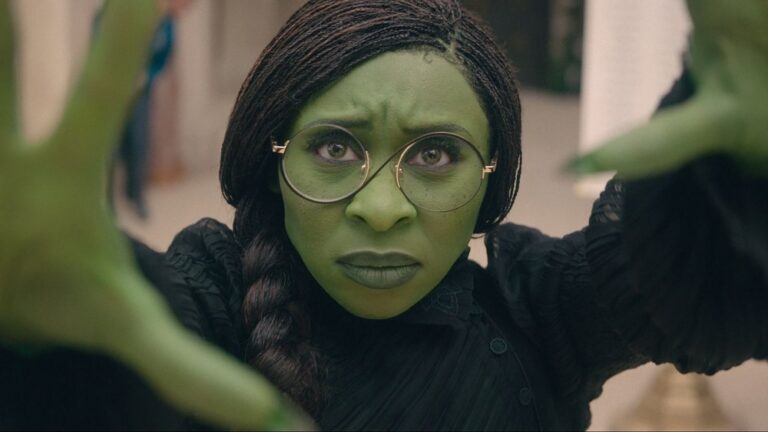Every couple of weeks, the OFCS polls its members with a question related to movies. It can be serious or amusing, but each member is given the opportunity to submit a short response to the question, which we will then post on Thursday mornings. Here is this week’s query.
Essay Question #10: Is the resurgence of 3D filmmaking just a fad, or is it here to stay?
Marilyn Ferdinand @ Ferdy on Films
Responses
Marilyn Ferdinand @ Ferdy on Films
I think the major studios and theaters would like it to remain because they can charge premium prices to audiences. But even more than that, filmmakers seem to be embracing 3D as adding a new tool to their toolbox, and some have made spectacular use of it. For example, Werner Herzog’s ability to take viewers into an off-limits cave in CAVE OF FORGOTTEN DREAMS was a true service, and Jean-Luc Godard’s GOODBYE TO LANGUAGE was revelatory. I believe more filmmakers will experiment with it and find a way to integrate it into their visual vocabulary.
Peter Nellhaus @ Coffee, Coffee and more Coffee
I’ve seen 3D filmmaking come and go a couple of times, and have enjoyed the revival of some of the first generation of 3D movies from the Fifties. This time around, I think 3D is here to stay. First, there is now the technology to create a 3D film after production, as well as newly improved technology for making movies at this time.
More importantly, 3D films are not only produced in Hollywood, but are produced internationally for both local and global markets. Examples can be found in films from mainland China, Thailand, and recently, Vietnam. Also, the use of 3D has been given a greater legitimacy as used by such acclaimed filmmakers as Wim Wenders, Werner Herzog, Tsui Hark and especially Jean-Luc Godard.
Jerry Roberts @ Armchair Cinema
3D, like anything else, is a gimmick whose staying power will depend greatly on its earning potential. It isn’t necessary for the enjoyment of a movie – it adds virtually nothing, but it’s an interesting gimmick that earns a few extra dollars to the total box office. 3D is the latest word in gimmickry from the major studios. They are floundering, because the quality of movies have gotten worse while the quality of its chief competitor, television, is now better than ever.
The technology for the 3D process has improved greatly from the old days of the cardboard-red/blue glasses. Today the process looks much better (and, unlike the old process, works for those with eye problems), but 3D still doesn’t enhance anything. It’s staying power is based on its profitability. Only time will tell.
Candice Frederick @ Reel Talk Online
I think at the end of the day it’s all about money. 3D is more expensive, and another way to get more money from people. I don’t mind 3D in theory. Does it need to be for every movie? No. But I do think its presence is necessary as a monetary incentive
Robert Cashill @ Popdose
If it’s a fad, it’s lasted longer than anyone might have expected. The many 3D conversions have improved dramatically since CLASH OF THE TITANS several years back–the problem is, there are many of them, audiences dislike paying the surcharges, and their boxoffice is fading. Some theaters limit showings of 3D films, and reviewers rarely mention the process anymore, unless it is exceptional, as it is with, say, GRAVITY.
What you may see is 3D being reserved for “exceptional” films, the ones also produced with IMAX showcasing in mind. In other words something of a return to 3D films as we saw them in the 90s, now feature films and not IMAX-branded documentaries. We may need to see that to keep the format artistically viable, along with the experiments of Godard at that end of the spectrum. It’s the rest that’s sagging.
That said I love (many) 3D films, particularly at home on Blu-ray–run through a projector, on a big screen, they’re spectacular. And I’d like to see the 80s films I grew up on get released on Blu-ray. They’re cheesier than what we see today but also far more aggressive and playful in their use of the format, which tends to be more conservative now.
Kristen Lopez @ Awards Circuit
I definitely think it’s a fad although it’s unknown when the bottom will drop out. In comparison to the big 3D boom of 1953, this one certainly enhanced the technology, but it’s just as gimmicky – if not less so – than it was back then. The enhanced box office revenue and ticket prices are certainly helping prolong the trend, but I have faith that it’ll quickly decease after a big bomb or two…God I hope so.
Kevin Carr @ Fat Guys at the Movies
The question of whether 3D filmmaking is here to stay is more about projection capabilities of theaters than the process itself. With the advent of digital projection, it is a simple push-button response to present a 3D print rather than making it an event. Even though upcharges have been overblown recently, most audiences don’t mind paying an extra dollar or two for a 3D movie instead of a 2D movie.
There’s a vocal minority that prefer 2D films for aesthetic reasons while many of the 2D choices made in the marketplace are cost-driven rather than quality-driven. As long as theaters don’t overcharge for 3D, it will offer a special add-on which is markedly different than the experience at home.
Robert Roten @ Laramie Movie Scope
I think it is here to stay. After all, it has been around in one form or another for more than 60 years. Theaters are still trying to add a significant surcharge for 3D showings, which is not justified. This has cut into the popularity of 3D showings.
3D showings will be more popular when all theaters greatly reduce or eliminate the surcharge on 3D tickets, as some theaters have already done.
Andrew Wyatt @ Gateway Cinephile
Even five years ago, I might have been tempted to say that 3D was a passing phenomenon, but looking at the landscape of Hollywood cinema in 2015, it seems that the safe bet is that it’s staying indefinitely. It’s become the norm for pretty much every single big-budget action-oriented feature, including films ostensibly for children. The public is willing to pay a premium to see certain types of films in 3D, to the point that it is now expected. Can you imagine a summer popcorn flick that cost $150 million *not* being released in 3D in 2015? It’s the new normal, unfortunately. There are a handful of films released in the past decade where 3D technology truly added something artistically, but filmmakers now employ it as a reflex, not a formal choice.
John Gilpatrick @ JohnLikesMovies.com
I think it’s a fad, but probably for different reasons than most others do. As long as 3D contributes to higher box office totals, it’s here to stay. But eventually, the business model will change. Something will replace 3D that shifts more of the cost to the consumer, and we can have a laugh about the goofy glasses we wore during the 2010s.



